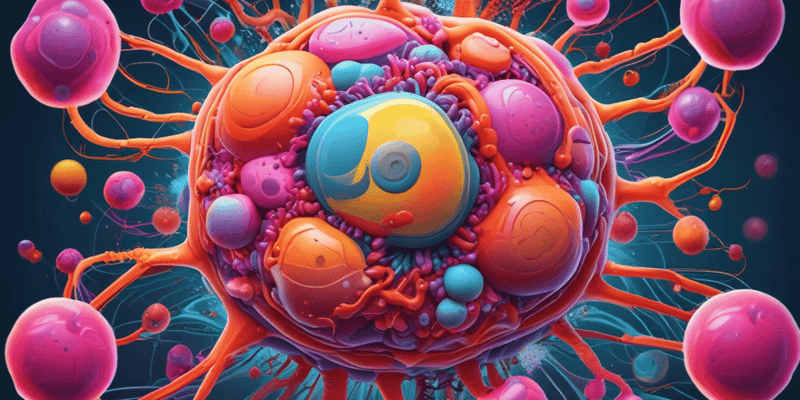30 Questions
What is the classical definition of a hormone?
A substance that is synthesized in one organ and transported by the circulatory system to act on another tissue.
What is the typical concentration range of hormones in the extracellular fluid?
Femtomolar to nanomolar (10^-15 to 10^-9 M)
According to the passage, how can hormones be classified?
By their chemical composition, solubility properties, location of receptors, and signal transduction mechanism.
What is the primary source of hormones classified by chemical composition?
Cholesterol
Which of the following is NOT a characteristic of hormones according to the passage?
Hormones are present at high concentrations in the extracellular fluid.
What is the key difference between the classical definition of a hormone and the more modern understanding of hormone action?
The classical definition only considers endocrine action, while the modern understanding also includes paracrine and autocrine action.
What are the intermediary molecules called that communicate between the surface receptors and intracellular metabolic processes?
Second messengers
Which type of hormones interact directly with intracellular receptors to provide the signal, often affecting the transcription rate of specific genes?
Lipophilic steroid, retinoid, and thyroid hormones
How are hormones like insulin synthesized before being secreted?
As precursor molecules in the producing cell, then processed and secreted upon a physiologic cue
What is the nature of the signal used by polypeptide/protein hormones and catecholamines to regulate various intracellular functions?
They generate a secondary messenger or a signal
How are hormones derived from cholesterol synthesized?
In final form and secreted immediately
What are the two different parts of the adrenal gland?
Cortex and medulla
Which of the following statements about aldosterone is correct?
It is the most potent natural mineralocorticoid in humans
Which of the following is a major stimulator of aldosterone production?
Angiotensin II
Which of the following statements about cortisol is correct?
It stimulates gluconeogenesis
Which of the following is the primary plasma binding protein for cortisol?
Corticosteroid-binding globulin (CBG)
Which of the following statements about steroidogenesis is correct?
It involves the repeated shuttling of substrates in and out of the mitochondria
Which of the following is the primary plasma binding protein for testosterone?
Testosterone-estrogen-binding globulin (TEBG)
Which enzyme is responsible for the side chain hydroxylation to form norepinephrine in the catecholamine synthesis pathway?
Dopamine beta-oxidase
What is the major product of the adrenal medulla?
Epinephrine
Which hormone requires a rare element for bioactivity in its synthesis?
Tetraiodothyronine (T4)
What is the intracellular reservoir where T3 and T4 are stored after synthesis?
Colloid
In which tissue is most of the norepinephrine present in organs innervated by sympathetic nerves made?
In situ
Which enzyme catalyzes the conversion of tyrosine to DOPA in the catecholamine synthesis pathway?
Tyrosine hydroxylase
What is the relationship between T4 and T3 hormones?
T3 is the more active form of thyroid hormone, derived from T4 by deiodinase enzymes.
Which of the following is NOT a characteristic of the synthesis of insulin?
Insulin and C-peptide are produced in unequal amounts during the cleavage process.
What is the role of C-peptide in insulin synthesis?
C-peptide is a marker for endogenous insulin production.
What triggers the release of insulin into the bloodstream?
An increase in blood glucose concentration above normal ranges.
Which system is responsible for regulating blood pressure?
The renin-angiotensin-aldosterone system.
What is the role of angiotensin I in the renin-angiotensin-aldosterone system?
Angiotensin I is a precursor molecule that is catalyzed by renin to produce angiotensin II.
Explore the general structure and properties of hormones in the human body. Learn how hormones act as mobile messages for intercellular communication between tissues.
Make Your Own Quizzes and Flashcards
Convert your notes into interactive study material.
Get started for free




